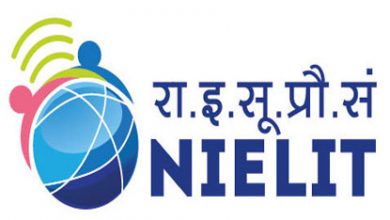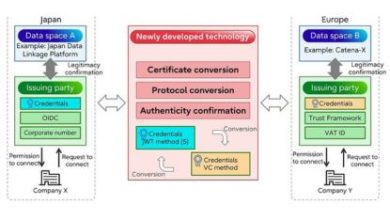As marketers we need to start strategizing campaigns targeted to this multi-faceted evolved digital user – Rohit Bagad

The mutation of Digital Marketing is revamping the pillars of today’s business. Digital marketing is not only to embark concrete existence but it is consistently becoming a larger part of most companies’ marketing budgets every year. Rohit Bagad- Founder & CEO of Inuxu Technologies shares a thorough insight posing company’s business ecosystem and strategies that have lead the company on the digital business paradigm. Excerpts.
What benefits does the 3-stage marketing strategy yield?
As data driven marketing strategies are expected to deliver better results, our approach revolves around utilizing the underlying value of tons of data available. Inuxu’s three-tier solution (IReAct) helps digital marketers realize the potential of digital advertising beyond affiliate business.
The first stage is ‘I’ – identify the relevant audience for the brand and then in the second stage ‘Re’ – reach them in real time across spectrum of digital media followed by the third stage “Act” – engage with the targeted audience with innovative messaging, enticing enough to do a conversion. This customized 3-stage digital marketing strategy yields higher ROI for the brands as it involves attracting and converting new and repeat customers.
What is premarketing and remarketing? Are they easier to implement in a digital space?
The way brands identify, target and reach their consumers has evolved over the years. Premarketing is an effort to attract new relevant customers and Remarketing tries to win back the dropped customers who did not perform the desired last mile action.
Though both traditional and digital advertising share similar goals .i.e. attracting and retaining relevant potential customers, given the power of technology these strategies are far easier to implement in digital space compared to the conventional advertising. Complex part in digital space is to identify user’s intent in real time and reaching them wherever they are in digital landscape with right messaging. Digital marketing being more personal, interactive, engaging, viral, measurable and dynamic, all Pre / Re marketing efforts can be better planned, executed, measured and optimized for a greater ROI.
How has analytics influenced premarketing?
Sooner or later every marketer will have to embrace data driven marketing. The data being collected needs to be integrated and analyzed in such a way that the intelligence can be used wisely in creating and delivering personalized ads. Till recent years, in absence of sophisticated analytics tools ‘Spray and Pray’ strategy was in practice which is slowly getting replaced by data driven marketing. Present day digital marketers needs actionable insights which can be used to take decisions and incorporate changes in digital campaigns in real-time. With programmatic advertising and advance audience targeting methodologies brands can preplan, experiment, execute, learn, optimize and re-plan in near real-time.
How is segmentation of audience achieved on digital platforms without compromising user privacy? Is user data being recorded in the process?
I would prefer not to make any generic statement here, will comment on how Inuxu’s product ‘adgebra’ derives audience segments. Adgebra’s segmentation engine analyses audience behavior, content consumption and engagement patterns across partner web-sites in real time and then using advance self-learning algorithms users are segmented into various pre-defined buckets. This way user’s PII (personally identified information) is never captured or stored. Moreover, advertisers get to target a segment of users (group of similar users) and not a single user which is a secured approach to segment and target audience.
How A/B tests are conducted and how integral are they to the process of remarketing?
Testing should always be one of the integral parts of any digital marketing campaign. When we talk about remarketing it becomes even more relevant as ROI of campaign is at risk. In remarketing A/B tests (split tests) are conducted over various parameters like audience segment based on product/category of interest, recency of visit, entry and exit points and other similar behavioral patterns of users.
One can’t make a generic conclusion about what worked for one advertiser will work for others. Initial A/B tests on various strategies and parameters gives fair idea on what would work and what would not. In digital advertising industry where things are happening and being measured in real-time, A/B testing is a routine task and is termed as ‘campaign optimization’.
Is the knowledge of previous marketing campaigns stored and analyzed as well? If so how is the data organized and mined?
Use of knowledge repository is must for every organization, who wants to be a leader in its category. In our case we do have internal trainings and knowledge sharing sessions on regular basis to share learnings, customer experiences and insights. This helps us to learn from our mistakes and optimize our efforts further. No physical data between two different campaigns gets shared or mined via platform, it’s always the knowledge and experience that gets shared among peers.
How are advertising solutions different from publishing solutions?
In digital media; it’s very important for any product to offer solutions to both side of the spectrum (advertisers & publishers). Fundamentally its tough task for any tool (product) to offer solutions to both sides, as their expectations are different. Advertisers want higher ROI in most cost effective way whereas Publishers demand higher revenue without any efforts. ‘adgebra’ – audience data and inventory marketplace, caters to both digital publishers and advertisers.
Adgebra (www.adgebra.in) helps advertisers deliver Pre-marketing & Re-Marketing campaigns on most innovative and high-impact ad-units in an integrated, transparent and fraud-free environment. This way adgebra is able to identify and reach the highly targeted audience in most innovative way and deliver higher brand recall and ROI in cost effective manner.
Adgebra empowers publishers to trade audience along with ad inventory for incremental revenue. Publishers get access to a suite of innovative ad units with complete control on price and frequency in real time. Adgebra can also be used as SAAS model by publishers to deliver their direct campaigns there by maximizing delivery capability.
What types of organizations are typically takers for these solutions?
The most evident sectors taking advantage of digital media over the years are e-commerce and BFSI. Foreseeing the growth of digital media ad spends, our focus is to drive the growth in sectors like real estate, FMCG, automobiles and education.
What challenges are unique to digital marketing in India?
As a sector, digital marketing is growing at a fast pace but there are several challenges that marketers will have to overcome. To start with, India needs to think “digital first”, as of now digital marketing strategy is still in the back seat. Secondly, CMO’s, CEO’s are still parking remnant spends towards digital marketing, businesses need to collectively increase the share and align their digital marketing efforts with the traditional ones. A lot of marketers expect digital advertising to deliver ROI, I recommend that digital marketing should also be considered as a branding channel rather than just a last-mile delivery channel. The challenges if overcome will help each business to differentiate and grow as a leader in its industry.
Does the heterogeneous nature of India’s demography complicate digital advertising? How digital marketing platforms for Indian audiences different for other countries?
India is one of the oldest and diverse cultures in the world. Despite of its diversity there is no complication in delivering digital media campaigns. This is where data driven marketing and Big Data comes into play. Our proprietary algorithms study diverse consumer behaviors and buckets them into segments to deliver highly personalized campaign messages. The diversity gives us a lot of options to think before we target the audience. An emerging segment in India is the regional audience or multi lingual audience. As marketers we need to start strategizing campaigns targeted to these multi-faceted evolved digital users.























